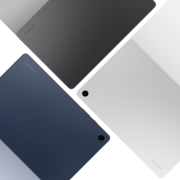Google-backed mobile operating system Android has been given a boost in the mobile WiMAX space due to a partnership between D2 Technologies, Beceem Communications and ECS.
The joint initiative will look at the deployment of the Android operating system on smartphones delivering VoIP over WiMAX and other IP-based communications capabilities.
D2 provided its mCUE converged communications client paired with Beceem’s high performance BCSM250 WiMAX modem and deployed on WiMAX-enabled smartphones and MIDs such as the ECS T371.
In early November, D2 and Beceem completed what they claim to be the world’s first mobile VoIP calls over WiMAX on Android using the Zoom OMAP34x-II mobile development platform (MDP) and a Beceem BSCM250 WiMAX modem with D2’s kernel-level embedded voice engine.
[Via telecoms.com | WiMAXforum | Wikipedia ]











Finally.
I have been waiting for a VoIP service like this. Good things await our futures.
How wide spread is WiMAX in the USA is my question.
WiMax in the US? It’s in like… Honolulu…
and 4 other states
http://www.engadget.com/2009/12/01/clearwires-wimax-rollout-rolls-on-nc-wa-tx-il-and-hi-get-li/
That’s where the GPhone comes in
wimax can go to hell. all its doing is slowing LTE down
It’s weird, I live in Wichita Falls, Texas and we already have wimax from Clear(use to be known as Clearwire). Havent used it yet but this would be awesome….my g1’s 3G is utter crap with tmobile
In Seattle Wimax is unbelievable. I can get streaming video in my car while driving without any latency. I can’t wait for it to become nationwide. If Clearwires deployment ahead of schedule is any indication I expect them to have nationwide coverage by the end of 2010.
In case you didn’t know Sprint owns 57% of Clearwire and the remaining 43% is owned by the likes of Google, Intel, Comcast, Time Warner etc.
Clearwire completed its 2009 schedule of Wimax deployments ahead of schedule in Nov. 2009. They are currently deployed in Portland, Baltimore, Atlanta, Las Vegas, Seattle, Salem, Boise, Pittsburg, Chicago, Dallas, Fortworth, San Antonio, Austin…These deployments give the company 30 million POPS. At the end of 2010 they are scheduled to have 120 million POPS and if you have been privy to the latest news, Clearwire, with help from the aforementioned investors, raised $4.2 billion, leaving them with more than $5 billion in cash to complete their schedule way beyond 2010. In the past the biggest question to Sprint/Clearwire’s Wimax was whether they would be able to raise enough funds to launch a nationwide Wimax platform. Well, this question has been put to rest with their latest actions.
In the early part of 2010 you can expect Wimax launches in San Fransisco, D.C., NYC, Houston and Boston. I am told by company employees that Southern California should get their launches by the end of the same year.
Anyone having any doubts as to Wimax’s viability when compared to LTE should look up Wimax IEEE 802.16m, a Wimax standard that has download speeds of 300Mhz to 1GHz. This mutation of Wimax will take around two years to evolve, which should put LTE in its place. According to the experts LTE won’t be fully operational until 2012, at which time they will have to compete with new Wimax mutation, 802.16m.
Another thing to note is that the Wimax ecosytem is pretty well developed whereas LTE still has a long way to go. Proof of which is the subject of this article, HTC already is working on a Wimax based smartphone. In South Korea it is my understanding that you can buy a Samsung phone that is Wimax compatible.
Last but not least, Sprint without its 4G coverage already has twice the 3G coverage of ATT and 14 times the coverage of T-Mobile. Its 3G coverage is slightly behind Verizon but they, unlike ATT and Verizon, can roam into VZ’s area. Unfortunately VZ can not roam into Sprint’s 4G areas.
Another very important aspect of Sprint’s Wimax is their Spectrum holdings. They practically have a complete monopoly of the 2.5 Ghz spectrum. This is big when considering the congestion caused by the content that needs to be delivered over the networks.
Sprint’s new network, based on WiMAX technology, could play a key role. By using WiMAX over that crucial leg (Backhaul), Sprint Nextel could cut network operating costs by two-thirds.
The few miles that a call travels from the cell tower to the switching center are “the single most expensive network operating cost” for wireless carriers. Backhaul accounts for more than 30% of wireless network operating costs, which themselves account for about one-third of total operating expenses. At Sprint, wireless operating costs added up to billions last year.
Cost saving is key as subscriber growth slows and competition gathers steam (see BusinessWeek.com, 12/20/06, “WiMAX IPOs Are on the Way”). Carriers need ways to cut costs fast or watch their financial performance crumble. Sprint Nextel plans to continue rolling out its WiMAX network through out the US in 2010.
Sprint Nextel isn’t the only company interested in bypassing backhaul costs. Cable companies also are testing an alternative fiber-optic technology in hopes of cutting costs associated with the wireless services they are rolling out.